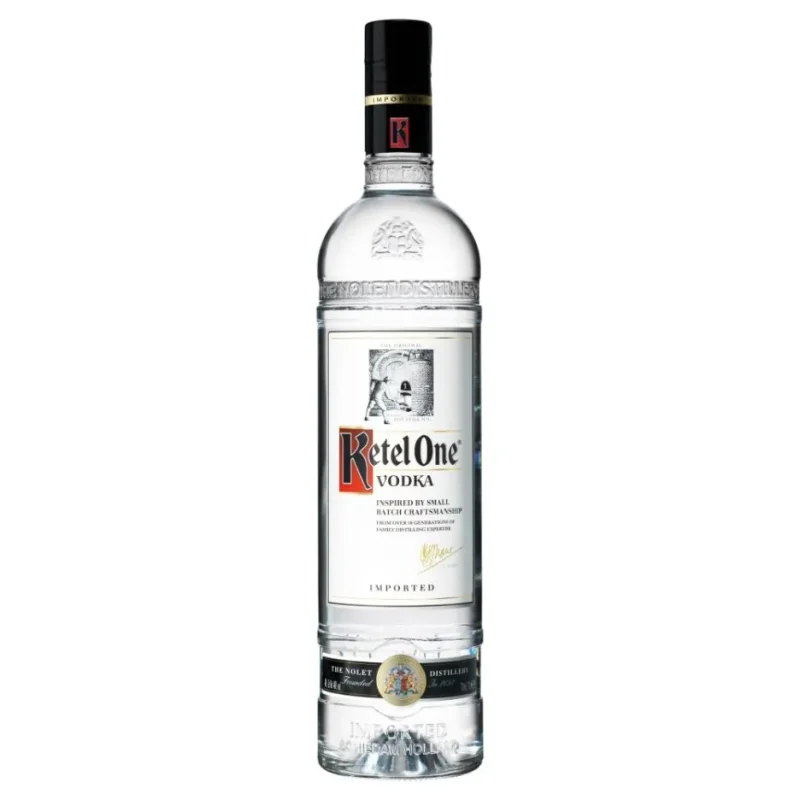Have you ever wondered how vodka is made from potatoes? We often enjoy this classic spirit in countless cocktails and marvel at the smooth flavor, but the process behind creating it remains a mystery to many. In this article, we will take a deep dive into how potatoes are transformed into vodka, as well as provide you with an easy-to-follow guide for making your own at home. Embarking on this journey will not only enhance your appreciation for vodka but also equip you with a fascinating conversation starter at your next gathering. So let's get started, and watch as humble potatoes turn into a sophisticated spirit.
Best Budget Vodkas Ranked
How To Make Vodka Out Of Potatoes Table of Contents
A Brief History of Potato Vodka
The Science of Vodka Distillation
How To Make Vodka Out Of Potatoes Example
Looking For The Best Vodka? You'll Love These Vodka Guides...
A Brief History of Potato Vodka
Potatoes have been used in the production of vodka since at least the 18th century in Eastern Europe. The potato was a valuable and abundant crop, uniquely suited for vodka production due to its high starch content. This high starch content in potatoes made them an excellent choice for farmers and distillers, particularly when grains were scarce or expensive.
The Science of Vodka Distillation
To understand how to make vodka out of potatoes, it is essential to first grasp the basics of distillation. Vodka is distilled from fermented sugary substances, with the fermented sugars being broken down into ethanol (alcohol) through the process called fermentation. In the case of potato vodka, the sugars come from the starch present in the potatoes and are released in the preliminary stages of production.
Fermentation
- Washing and Cutting Potatoes: The process begins by washing and cutting the potatoes into small pieces. This step ensures the removal of dirt, debris, and bacteria that may affect the final product's taste and quality.
- Cooking and Mashing: Cook the potatoes until they are soft, then mash them thoroughly. Cooking and mashing the potatoes release the starch, which will be converted into sugars to facilitate fermentation.
- Adding Enzymes: After cooling the mashed potatoes, add enzymes like amylase to break down the starch into simpler sugars. This process is called saccharification and is vital for the fermentation process to occur.
- Fermentation: Once the sugars have been released, yeast is added to the mix. The yeast feeds on these sugars, breaking them down and releasing carbon dioxide and alcohol as byproducts of the process. This stage typically takes several days to complete.
Distillation
After the fermentation process, the resulting liquid contains alcohol, but it is far from a refined vodka. The next step is distillation, which involves separating the alcohol from water and other impurities, resulting in a higher proof and purer spirit.
- Heating the Fermented Mixture: The fermented mixture, also known as the "wash," is heated in a still. Alcohol boils at a lower temperature than water (78.2°C or 173°F), so it will evaporate and separate from the rest of the mixture more readily.
- Collecting the Alcohol Vapor: The alcohol vapor rises through a column still and condenses back into a liquid as it cools. This "distillate" is collected and carefully controlled, resulting in a higher alcohol concentration than contained in the initial wash.
- Multiple Distillations: Vodka is typically distilled multiple times to achieve a high level of purity and smoothness. Each distillation cycle further refines the overall quality of the vodka, reducing impurities and off flavors.
Filtration and Dilution
Not all vodka goes through a filtration process, but when employed, filtration helps remove any lingering impurities and smooth out the final taste. After filtration, the vodka is diluted with water to reduce the alcohol content to a typical level of around 40% ABV (Alcohol By Volume). The resulting product is now ready to be bottled and consumed as potato vodka.
How To Make Vodka Out Of Potatoes Example
A basic recipe to make potato vodka at home requires the following steps:
1. Prepare 5 kg of washed and diced potatoes.
2. Cook and mash the potatoes.
3. Cool the mashed potatoes to 70°C (158°F), and then add 10 grams of amylase enzyme.
4. After 1-2 hours, cool the mixture to around 20°C (68°F) and add vodka yeast.
5. Ferment for 5-10 days at 20°C (68°F), stirring daily.
6. Distill the fermented wash using a home distillation unit or still.
7. Dilute the distillate with water to a 40% ABV concentration.
Please note that distilling alcohol at home may be illegal in your area. Check the regulations before proceeding, and always follow safe practices to ensure a safe and enjoyable experience.
Frequently Asked Questions
Why Make Vodka from Potatoes?
Potatoes, rich in starch, can be transformed into sugars suitable for fermentation. This process has deep roots in Eastern European traditions, giving vodka a distinct, smooth taste.
Is Potato Vodka Superior to Grain Vodka?
It's a matter of personal preference. Some aficionados claim potato vodka has a creamier mouthfeel and a more neutral taste, but others prefer the sharper profile of grain-based vodka.
What Kind of Potatoes Are Best for Vodka?
High-starch potatoes, like Russets, are ideal. The starch content is vital for the fermentation process.
How Many Potatoes Do I Need?
For a small batch of homemade vodka, around 10-15 pounds of potatoes should suffice. However, the yield varies based on starch content and efficiency.
What Equipment Will I Need?
At a basic level, you'll need a fermenting vessel, a distillation apparatus, and storage bottles. However, the specific requirements might change depending on your method.
What's the Basic Process?
In summary: Cook the potatoes, mash them, allow the mash to ferment, and then distill the resulting liquid to produce vodka.
How Long Does the Fermentation Process Take?
Typically, fermentation for potato vodka takes around 1-2 weeks. The exact time can vary based on factors like temperature and yeast activity.
What Yeast Should I Use?
Champagne yeast is often recommended for vodka production due to its high alcohol tolerance and clean fermenting properties.
Can I Flavor My Vodka?
Absolutely! After distillation, you can infuse the vodka with flavors like herbs, fruits, or spices.
What's the Significance of Distillation?
Distillation purifies and strengthens the vodka. It separates the alcohol from impurities and increases its concentration.
How Many Times Should the Vodka Be Distilled?
At least twice. Each round of distillation improves purity and smoothness. Premium vodkas often boast of being distilled multiple times.
Is Homemade Vodka Safe?
When done correctly, yes. However, it's crucial to discard the "heads" and "tails" during distillation. These can contain harmful compounds.
What's the Ideal Storage for Potato Vodka?
Store your vodka in a cool, dark place. Glass bottles with airtight seals are preferable.
How Long Can I Store My Vodka?
When stored properly, vodka has an indefinite shelf life. However, it's best consumed within 1-2 years for optimal taste.
Is Potato Vodka Gluten-Free?
Yes! Those with gluten sensitivities can often enjoy potato vodka without adverse reactions.
How Does Potato Vodka Compare in Calories?
Vodka, whether from grain or potatoes, has roughly the same caloric content — about 64 calories per ounce.
Why Doesn't My Vodka Taste Like Commercial Brands?
Commercial brands have proprietary methods, equipment, and multiple distillation rounds. Homemade vodka has a more rustic, authentic taste.
Can I Use Sweet Potatoes?
Technically, yes. However, the flavor profile and sugar content differ, which will affect the fermentation and taste of the vodka.
What's the Alcohol Content in Homemade Vodka?
Typically, after distillation, homemade vodka can range from 40-50% alcohol by volume (ABV), equivalent to 80-100 proof. But it can vary based on distillation efficiency.
Any Tips for First-Timers?
Start with a small batch, be patient, ensure cleanliness in all equipment, and always prioritize safety, especially during distillation.
We hope this guide has provided you with a greater understanding of how vodka is made from potatoes and perhaps even inspired you to try your hand at making your own. Remember, the process requires patience and precision, but the reward is a unique and satisfying homemade spirit. Be sure to explore our other vodka-related articles on Vodka Doctors to enrich your knowledge further and share your newfound expertise with your friends and fellow vodka enthusiasts. Cheers to creating new conversations and experiences as you embark on your vodka-making adventures!
















